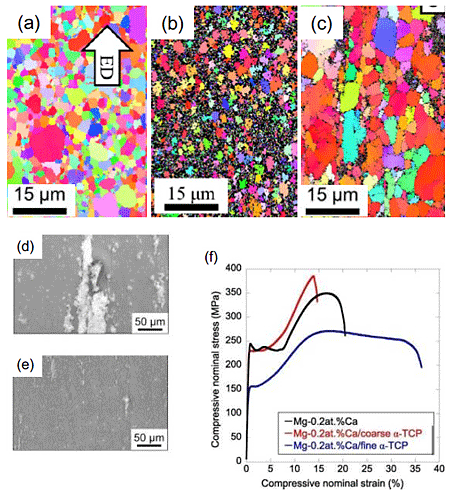In this research, fabrication of composite of magnesium and α-tricalcium phosphate (α-TCP) was conducted to develop biodegradable materials with high strength and excellent biocompatibility. In addition, the influence of the α-TCP particle size on mechanical properties and biodegradability of the composites were also investigated.
Figures 1 (a)–(c) show the inverse pole figure (IPF) maps of the three materials. These images demonstrate that particle size of α-TCP affects the texture and grain size which may be related to particle stimulated nucleation of recrystallization. Distribution of reinforcement particles became relatively homogeneous confirmed when compared with the distribution of coarse particles in this research as shown in Figs. 2 (d)–(e). These microstructural changes were reflected on deformation curve and compressive yield stress (Fig. 2 (f)). The yield strengths of composite were affected by the article dispersion strengthening, texture softening and Hall–Petch effect.
For evaluation of biodegradation behavior of composites, immersion test was conducted. Micro CT imaging after immersion test displays that refinement of the reinforcement particles contributed to homogeneous and improved corrosion resistance.
